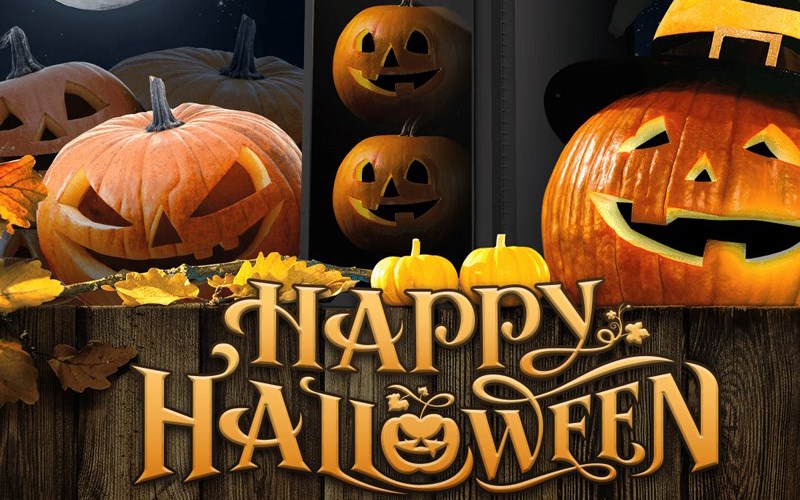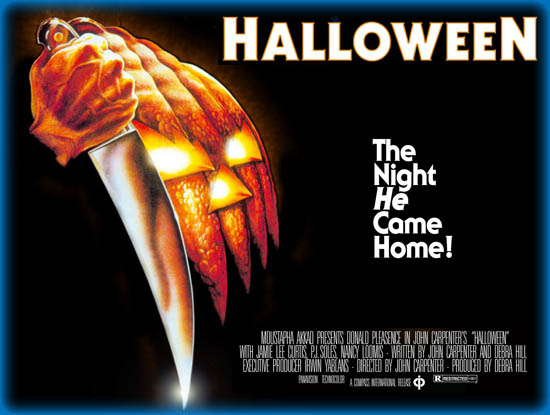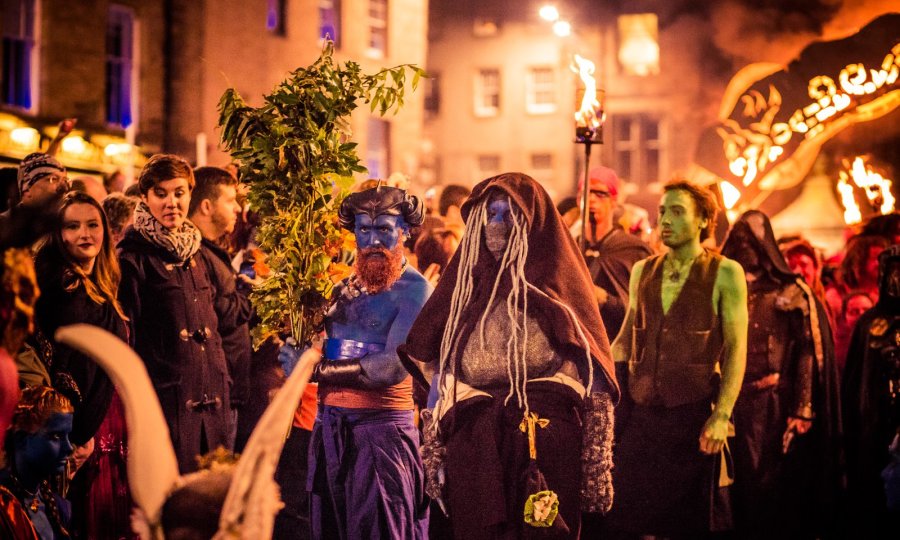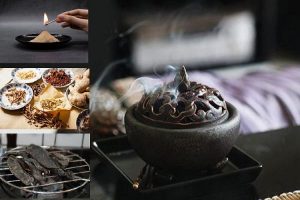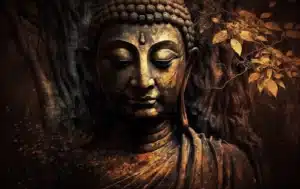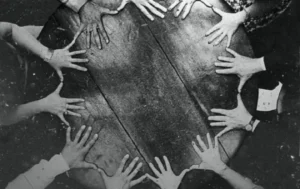When you’re celebrating Halloween, you’ll discover a rich tapestry of traditions, beliefs, and rituals that have evolved over the centuries. Modern practices such as carving jack-o-lanterns, donning costumes, and trick-or-treating can be traced back to ancient rites and customs intended to ward off malicious spirits or honor deceased ancestors.
Over the years, as cultures collide and traditions merge, you can observe how Halloween has transformed into a global phenomenon, celebrated with both reverence and fun. Today, when you dress up in spooky costumes and parade through the streets to celebrate Halloween, you are not simply participating in a event but are also connecting with a long-standing tradition that addresses universal human themes of death, memory and the occult.
When is Halloween celebrated in 2024?
Halloween, commemorated on October 31 annually, stands as an event rich in history and traditions. Tracing its origins back to the ancient Celtic festival of Samhain, the Celts lit bonfires and adorned themselves in costumes as a protective measure against phantoms.
Such practices stem from beliefs that, on the eve of the new year which they celebrated on November 1, the boundary between the worlds of the living and the dead became blurred, making the latter visible to the mortal realm.
In an effort to subsume and Christianize these pagan practices, Pope Gregory III, in the eighth century, designated November 1 as All Saints’ Day, a day to pay homage to all the saints and martyrs.
This move not only provided a Christian alternative to the pagan festival but also effectively incorporated several of Samhain’s customs. Consequently, the day preceding All Saints’ Day became recognized as All Hallows Eve, eventually evolving into what is now referred to as Halloween. Thus, Halloween 2024, set to take place on Thursday, October 31, promises to continue this intricate blend of ancient rites and contemporary festivities.
The History of Halloween
Halloween origins can be traced back to the ancient Celtic festival of Samhain, celebrated at the end of the harvest season. For the Celts, who lived over 2,000 years ago in what is now Ireland, the United Kingdom, and northern France, this day marked the end of summer and the onset of a cold, dark winter, a time associated with human death. They believed that on the night of October 31, the boundary between the worlds of the living and the dead dissolved, allowing the spirits of the deceased to return to earth.
Such beliefs were not without implications. The return of the spirits was thought to cause trouble and harm crops, but they also made it easier for the Druids, or Celtic priests, to make predictions about the future. To commemorate the event, Druids built large, sacred bonfires where people gathered to offer crops and animals as sacrifices to the Celtic deities. Wearing costumes, typically consisting of animal heads and skins, the Celts would also attempt to tell each other’s fortunes.
The Roman Empire, having conquered the majority of Celtic territory by 43 AD, incorporated two of their own festivals into the traditional celebration of Samhain: Feralia, a day in late October to commemorate the passing of the dead, and a day to honor Pomona, the Roman goddess of fruit and trees. The symbol of Pomona is an apple, which might explain the tradition of “bobbing” for apples practiced on Halloween.
“Halloween wraps fear in innocence, as though it were a slightly sour sweet. Let terror, then, be turned into a treat.” – Nicholas Gordon, American Poet.
In the 8th century, in a move to supplant pagan festivals with Christian ones, Pope Gregory III decreed November 1 as All Saints’ Day, a time to honor all saints and martyrs. This celebration was also known as All Hallows or All Hallowmas, and the night before, the traditional night of Samhain, became known as All Hallows’ Eve, eventually shortened to Halloween. Later, in the 1000 AD, the church would make November 2 All Souls’ Day, a day to honor the dead, which was celebrated similarly to Samhain, with big bonfires, parades, and dressing up in costumes.
With the passage of time and the migration of peoples, especially the movement of Europeans to the Americas, Halloween underwent further transformation. In the United States, the melding of various European and Native American traditions led to the modern iteration of Halloween. By the 19th century, with the influx of Irish immigrants fleeing the Potato Famine, Halloween became a widely celebrated event in the US. Activities like trick-or-treating, festive gatherings, donning costumes, and eating treats became popularized in the 20th century, reflecting a blend of traditions from various cultures over millennia.
Meaning of Halloween
Halloween holds multifaceted meanings and interpretations, rooted in both cultural practices and traditional folklore. Two predominant interpretations emerge when considering the Vietnamese perspective, drawing upon the tale of the character Jack.
Educationally: Actions and life trajectory of Jack during the Halloween celebration serve as moral exemplars for the younger generation. Jack’s narrative provides lessons on the perils of greed, inebriation, and miserliness.
His story underscores the virtues of compassion, benevolence, and the importance of assisting those in need. Furthermore, Jack’s interaction with supernatural entities cautions against trifling with malevolent forces. The metaphorical representation of these forces, understood as schemes designed to threaten, intimidate, or deceive, highlights the dangers they pose to individuals and society.
Ingenious tricks, borne from the imagination of the youth, can potentially harm others or the broader community. Jack’s Halloween narrative also acknowledges the nuanced attitude of the devil, emphasizing concepts of retribution, reciprocation, and the keeping of promises. Even though this commitment to a promise ultimately casts Jack into a wandering, restless spirit, it offers a reflection on the consequences of one’s actions.
“On Halloween, witches come true; wild ghosts escape from dreams.” – Anonymous
In terms of humanity: Jack symbolizes the realm of the deceased. Post-death, Jack, now a lost soul, finds himself rejected by both Heaven and Hell, only to be granted a reprieve to return to the living realm. Whereas Jack was once an isolated individual, his transformation allows him to intermingle with the living freely. Particularly during Halloween, as the living don costumes resembling spirits and demons, Jack’s soul finds solace and camouflage, alleviating his loneliness. This represents the anthropomorphic essence of the Halloween festival.
Consequently, Halloween can be perceived as a confluence of the living and the deceased realms, a meeting point underlined by profound empathy and compassion. The day serves as a reminder of the thin veil separating these realms, and of the perpetual dance between morality and consequences, solitude and community.
Halloween costumes and trick-or-treating
As LotusBuddhas shared above, the practice of donning costumes during Halloween can be traced back to the ancient Celtic festival of Samhain. During this time, it was believed that the veil between the world of the living and that of the dead was at its thinnest. Spirits were thought to roam the Earth, causing mischief and potentially harm. You, as an ancient Celt, might have worn a costume, particularly one that resembled fearsome creatures or spirits, as a means to either repel these entities or blend in among them, thereby avoiding harm.
Parallelly, the custom of trick-or-treating has origins in medieval Britain. During this period, “souling” was a common practice wherein you, if you were a poor individual, might visit homes, offering prayers for the dead in exchange for “soul cakes” – a form of alms. This practice ensured that the souls of the departed would find reprieve in the afterlife. Over time, this ritual transformed, with children taking on the role of visiting homes, offering songs, poems, or other forms of entertainment in exchange for treats.
“I love Halloween, and I love that feeling: the cold air, the spooky dangers lurking around the corner.” – Evan Peters, American Actor
The migration of European traditions to North America in the 19th and 20th centuries, coupled with the mixing of various customs, gave rise to the modern practice of trick-or-treating as you recognize it today. Now, as you participate in this ritual, you might dress in a wide array of costumes, from popular culture characters to classic Halloween figures, and go from door to door, soliciting candy with the playful threat of a trick if no treat is provided.
Spooky Halloween movies
When you turn your attention to the cinematic world of Halloween, it becomes clear that the holiday’s association with the eerie and supernatural has influenced a rich tapestry of films designed to instill fear, suspense, and a sense of the uncanny. These movies, ranging from psychological thrillers to outright horror, serve as a testament to humanity’s enduring fascination with the macabre and the unknown.
At the forefront, classics such as Alfred Hitchcock’s “Psycho” (1960) offer a deep dive into the human psyche. Here, you are confronted with the unnerving duality of man and the terror that can reside within the mundane. The Bates Motel, with its enigmatic proprietor, Norman Bates, challenges your perception of sanity and the thin line between the ordinary and the monstrous.
John Carpenter’s “Halloween” (1978) is another seminal work in the spooky film canon. As you watch, you are thrust into the quiet town of Haddonfield, where the seemingly indestructible Michael Myers embarks on a murderous rampage. This film, punctuated by its iconic soundtrack, prompts you to confront the relentless nature of evil.
The realm of supernatural horror offers further intrigue. In “The Exorcist” (1973), directed by William Friedkin, you bear witness to the harrowing tale of a young girl’s possession and the desperate attempts of a priest to exorcise the malevolent force. The juxtaposition of innocence and malevolence in this film invites you to reflect on the age-old battle between good and evil.
“The farther we’ve gotten from the magic and mystery of our past, the more we’ve come to need Halloween.” – Paula Curan
Stanley Kubrick’s adaptation of Stephen King’s “The Shining” (1980) is another masterpiece that delves into the effects of isolation and the haunting legacy of past sins. As you traverse the sprawling corridors of the Overlook Hotel alongside Jack Torrance, you are confronted with a chilling descent into madness.
Modern entries, such as “Get Out” (2017) by Jordan Peele, weave sociopolitical themes into their narratives. Here, you are invited to consider the horrors of racism and cultural appropriation, camouflaged within the veneer of polite society. The movie’s unique blend of horror and biting social commentary prompts you to re-evaluate societal norms and the underlying fears they may mask.
How to celebrate Halloween
To truly immerse oneself in the Halloween spirit, you might begin by decorating your home. Such an endeavor is not merely about festooning spaces with decorations, but rather about cultivating an ambiance that resonates with the spookiness of the season.
Whether it be through the placement of plastic spiders, the eerie glow of LED candles, or the iconic swirls of fake spider webs, you are crafting an environment that pays homage to the longstanding traditions of Halloween. Moreover, the friendly neighborhood competition to showcase the most haunting aesthetic further emphasizes the communal nature of this celebration.
Your immersion in Halloween festivities can further be deepened through the art of cinema. When you curate a list of horror films, from esteemed classics like “The Exorcist” to more contemporary offerings such as “The Conjuring,” you are not merely engaging in passive entertainment. Instead, you are participating in a narrative tradition that taps into humanity’s deepest fears and apprehensions. For those of you with younger audiences, films like “Hocus Pocus” or “The Nightmare Before Christmas” serve as apt alternatives, ensuring that the eerie charm of Halloween is accessible to all.
However, Halloween is not solely about spectacles and narratives. The act of donning a costume, for instance, is a testament to the transformative power of the holiday. When you adorn a costume and participate in themed dinners or parties, you are engaging in a performative act, one that allows for the temporary suspension of everyday identities. Such gatherings, enhanced by thematic music and delectable treats, highlight the communal and playful spirit of Halloween.
Pumpkin carving stands as another quintessential Halloween activity. For you, the process of selecting the perfect pumpkin and subsequently crafting a unique design is not merely an artistic endeavor. It is a tactile and intimate interaction with the very symbol of Halloween. The act of carving, when approached with creativity and diligence, results in the creation of the iconic jack-o-lantern, a luminescent beacon of the season.
For those of you who wish to further engage with the agrarian roots of the holiday, a visit to a pumpkin farm can prove enriching. As you traverse these farms, you’re not merely selecting a pumpkin, but rather immersing yourself in the rhythms and offerings of the season. The myriad of themed activities and events available on these farms further enhance the celebratory ambiance.
Lastly, the act of trick-or-treating remains the crowning jewel of Halloween celebrations. As you, clad in your chosen costume, traverse neighborhoods with children or friends in tow, you are participating in a ritual that underscores the joy of community sharing and the thrill of the unexpected.
Some Halloween traditions around the world
Halloween has evolved and diversified in its observance across various cultures and geographies. As the holiday has spread and been adapted by different societies, a plethora of distinct Halloween-related customs have emerged globally.
In Ireland, considered the birthplace of Halloween, the holiday harks back to the Celtic festival of Samhain. Traditionally, it was believed that the veil between the living and the dead was thinnest at this time, allowing spirits to walk among the living. Bonfires were lit to ward off evil spirits, and families would often set places at their dinner tables for deceased loved ones in remembrance. The practice of “guising” – dressing in costumes and visiting homes for food or coins – can be traced back to medieval Ireland and is a precursor to modern trick-or-treating.
Across the channel in England, Halloween was historically linked with the celebration of Guy Fawkes Night on November 5th. Effigies of Guy Fawkes, who attempted to blow up the Houses of Parliament in 1605, are burned on bonfires. However, in recent decades, American-style Halloween celebrations, including trick-or-treating and costume parties, have gained prominence.
In Mexico and many parts of Latin America, the period from October 31 to November 2 is celebrated as “Día de los Muertos” or Day of the Dead. This vibrant and colorful tradition involves families building altars and decorating them with photos, favorite foods, and belongings of their deceased loved ones. Cemeteries come alive with music, food, and dance as people gather to remember and celebrate the lives of those passed.
In parts of Italy, Spain, and Portugal, All Saints’ Day and All Souls’ Day (November 1st and 2nd respectively) are traditionally observed by families who remember the dead by leaving flowers on the graves of departed relatives and lighting candles in their memory.
In some parts of Eastern Europe, it’s believed that the souls of the dead are present during this period. Breads, water, and a lighted lamp are often left on tables overnight to provide sustenance to visiting souls.
In the Philippines, the “Pangangaluluwa” was a traditional practice wherein children would go from house to house, offering songs and prayers for those who have passed away in exchange for treats or money. This has similarities to trick-or-treating but is rooted in Filipino All Saints’ Day and All Souls’ Day traditions.
In Hong Kong, the festival of “Yue Lan” or the Festival of the Hungry Ghosts is observed. It is believed that restless spirits roam the world during this time. People offer food and gifts to appease these transient ghosts, while also burning joss paper as a way to send material wealth to the next world for the spirits’ use.
These diverse traditions underscore the universality of themes surrounding death, remembrance and the supernatural. While each culture adds its unique flavor and practices to Halloween and its associated observances, they all resonate with the profound human need to understand, honor, and find meaning in the cycles of life and death.


